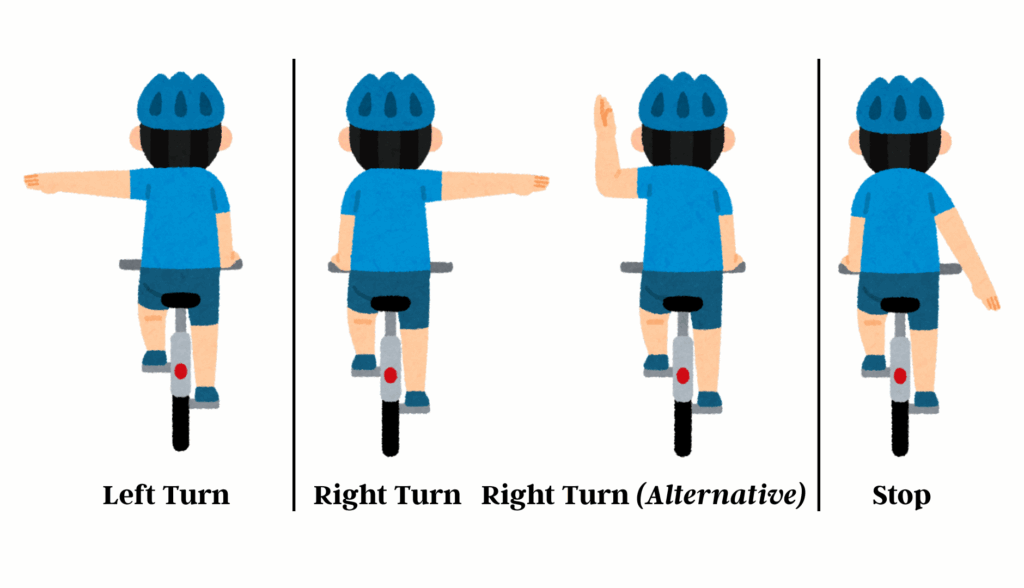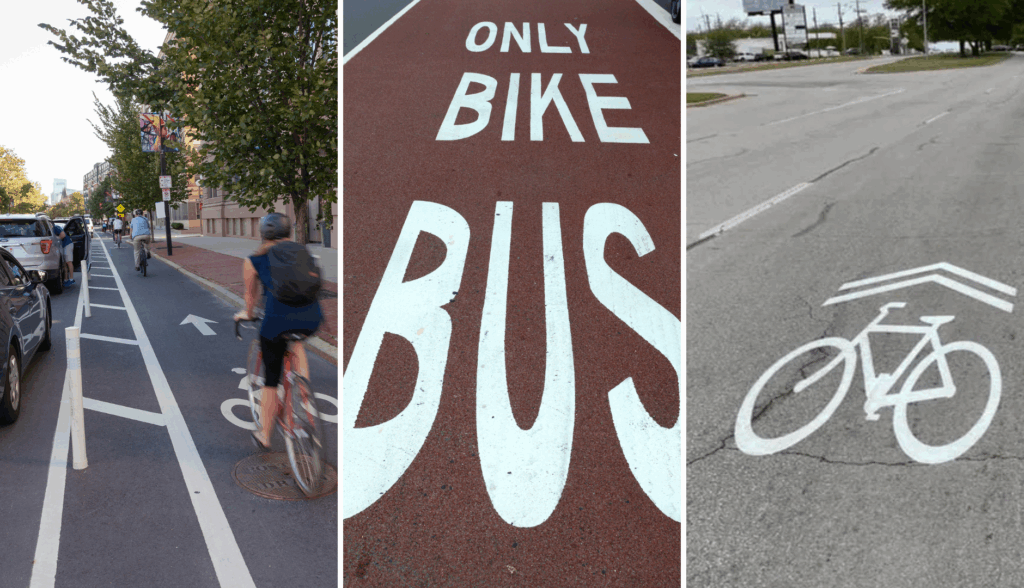As the weather gets warmer, we love to see more and more people biking throughout the city. Whether it’s commuting to work or school, cruising around town or getting in some exercise, bicycles are a great form of transportation. While we encourage people to ride their bikes, we also encourage safety!
Below we wanted to share some Q&As that are important to know in order to increase safety while riding your bicycle.
Question: Do Bicyclists have to follow the same rules of the road as motorcyclists?
Answer: Yes.
Like motorists, bicyclists must also follow traffic lights – stop on red, go on green, yield on yellow. Bicyclists must also stop at stop signs and abide by any other traffic signs. Additionally, if you plan to turn while on a bicycle, you must use turn signals to notify others on the road that you are turning – these would be hand signals.
Question: What hand signals should bicyclists use to communicate their maneuvers to others?
Answer:
Question: What type of bicycle lanes are there?
Answer: There are three common types of bicycle lanes as shown below. From left to right they are:
- Separated lanes – These roads have distinct areas for different users. A lane for motor vehicles, a parking lane and a separate lane meant only for bicycles.
- Bus and Bike only lanes – These lanes are designated areas that only buses and bicycles share, completely separate from motor vehicle traffic.
- Shared roads – Roads with a bicycle sign painted on them indicate that motorists and bicyclists share the road. If a bicycle needs to take up the whole road, they are able to, and motorists need to respect that.
Question: What should cyclists do to ensure their bike is safe and ready to ride after being stored away for the winter?
Answer: It is recommended that after taking a bicycle out of storage, it goes through a safety check. Most bicycles shops offer safety checks.
If there are no bicycle shops in your area, or you prefer to do a check at home these are the things you must check before riding –
The ABCs
A – Air tires – Make sure the tire’s air pressure is at a safe and suitable level. This will help prevent tire blowouts.
B- Brakes – Check to make sure the brakes are working properly to stop the bicycle completely.
C – Chain – Ensure the chain is properly lubricated and moving correctly.
If any of these aspects are not working correctly, have a professional check them out before operating your bicycle.
If a cyclist uses their bicycle during warm weather and stores it during the winter, it is recommended to do a safety check once a year. If cyclists use their bicycles all year round or commute with them daily, safety checks are recommended 2-3 times a year.
Question: If a person is involved in a crash and their head impacts while wearing the helmet, is that helmet safe to use again?
Answer: No. Any helmet that was involved in a crash, no matter how serious the crash was, should not be used again. After a crash the helmet is no longer at its optimal safety. Sometimes even though the helmet may look okay, there are hairline cracks in the structure which compromise its safety.
Question: A number of crashes involving cyclists occur between 6pm-9pm, what can cyclists do to protect themselves during those hours when it begins to get darker?
Answer: Helping to make themselves more visible is an important way to help reduce the risk of crashes during the dusk hours. Below are a few ways that can be done.
- Place and use a rear light on the back of a helmet, backpack or back of bicycle. This helps people coming from behind the better see the cyclist.
- There are a variety of safety light options, but using one that has different lumens settings can be helpful for different times of day.
- Wear something with reflective high-vis material. Whether that be clothing, a backpack cover, a helmet cover, stickers, leg bands, and more.
Question: What does Massachusetts law say about motorists and cyclists?
Answer: In the past few years, a law was passed in Massachusetts requiring that a motorist give 5ft of space when they are passing a cyclist. Therefore, there must be 5ft of space to the right of the vehicle and the left of the cyclist. The law also allows for a motorist to cross a double yellow line, when it is safe to do so, in order to give the bicyclist, the correct amount of space.
On the other side, the law requires that cyclists wear a reflector and running rear light somewhere that is visible for motorists to see during dusk and dawn. This will allow for motorists to more easily see cyclists and give them that required space.
Bike lane photo sources:
https://www.boston.gov/departments/boston-bikes/better-bike-lanes-bike-lane-types


